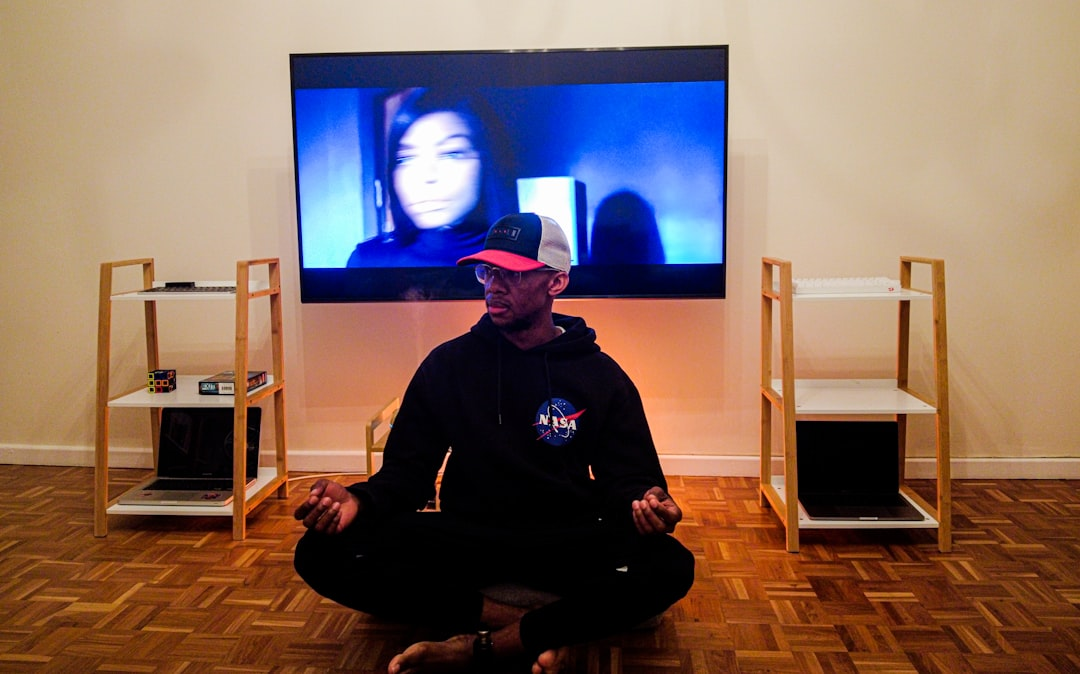document.addEventListener(‘DOMContentLoaded’, function() { document.querySelectorAll(‘.expand-list-button’).forEach(button => { button.addEventListener(‘click’, function() { const listId = this.getAttribute(‘data-target’); const extraListContainer = document.getElementById(listId); if (extraListContainer) { const isExpanded = extraListContainer.style.maxHeight && extraListContainer.style.maxHeight !== ‘0px’; if (isExpanded) { extraListContainer.style.maxHeight = ‘0px’; this.textContent = ‘Show more…’; } else { extraListContainer.style.maxHeight = extraListContainer.scrollHeight + ‘px’; this.textContent = ‘Show less…’; } } }); }); }); .expandable-list { max-height: 0; overflow: hidden; transition: max-height 0.4s ease-in-out; } .expand-list-button { background-color: #f0f0f0; border: 1px solid #ddd; border-radius: 4px; padding: 8px 16px; cursor: pointer; display: inline-block; margin-top: 10px; font-size: 0.9em; font-weight: 600; color: #333; transition: background-color 0.2s; } .expand-list-button:hover { background-color: #e0e0e0; }

What if you could consciously fine-tune your brain’s state, shifting from anxiety to calm, or from distraction to laser-sharp focus, simply by altering your internal landscape? This isn’t science fiction; it’s the profound power of brainwave entrainment, an ancient concept now understood through modern neuroscience.
This definitive guide, “Practical Meditation Techniques for Brainwave Entrainment,” will demystify how specific meditation practices can gently guide your brain into desired states—be it alpha for relaxation, theta for creativity, or even delta for restorative sleep. You’ll gain transformative insights into leveraging these techniques to enhance your well-being, boost cognitive performance, and cultivate an unshakeable inner peace.
💡 Key Takeaways
- Brainwave entrainment is the process of synchronizing your brain’s electrical activity with external stimuli, and it can be effectively achieved through specific meditation techniques.
- Different meditation styles (e.g., breath-focused, guided imagery) are uniquely suited to target and induce specific brainwave states (Alpha, Theta, Delta) for desired outcomes like relaxation or enhanced creativity.
- Beginners can significantly benefit from guided meditation, which often incorporates principles of brainwave entrainment to ease entry into deeper meditative states and accelerate the learning process.
- Consistent practice of entrainment-focused meditation techniques leads to measurable improvements in stress reduction, cognitive function, emotional regulation, and sleep quality.
In This Article
- — 💡 Key Takeaways
- → 🧘 Meditation Styles & Approaches
- — 🧠 Mindfulness-Based Meditation
- — ✨ Focused Attention & Concentration Meditation
- — 🌌 Transcendental Meditation (TM)
- — 😴 Restorative & Deep Relaxation Practices
- — 💡 Choosing Your Path for Brainwave Entrainment
- → 🎧 Guided Meditation & Beginners
- — 🧠 Why Guided Meditation is a Game-Changer for Beginners
- — 🎧 Choosing Your Guided Meditation & Platform
- — 🧘♀️ Making the Most of Your Guided Session
- — 🚧 Common Pitfalls & How to Avoid Them
🧘 Meditation Styles & Approaches

Welcome, fellow explorers of the mind! In our journey through Biohacking Your Mind: The Guide to Meditation & Mental State Control, understanding the diverse landscape of meditation styles is paramount. It’s a common misconception that “meditation” is a monolithic practice. In reality, it’s an umbrella term encompassing a vast array of techniques, each with unique approaches to cultivating focus, awareness, and, crucially for our purposes, influencing brainwave states.
Think of it like choosing the right tool for a specific task. While a hammer can drive a nail, you wouldn’t use it to cut wood. Similarly, different meditation styles are optimized for different outcomes – whether it’s acute stress reduction, enhanced creativity, or deep relaxation, all of which connect to specific brainwave patterns. Let’s dive into some of the most prominent approaches and how they align with our brainwave entrainment goals.
🧠 Mindfulness-Based Meditation
Mindfulness meditation, popularized by apps like Headspace and Calm, focuses on bringing awareness to the present moment, observing thoughts, feelings, and bodily sensations without judgment. It’s about being an impartial observer to the mind’s constant chatter, rather than trying to silence it. This foundational practice is excellent for beginners.
- ✅ Brainwave Impact: While often starting in a relatively high-frequency Beta state (due to initial mental activity), consistent mindfulness practice can gently guide the brain towards more relaxed Alpha waves (8-12 Hz). This shift is crucial for stress reduction and improved focus. Over time, experienced practitioners can even access deeper Theta states (4-7 Hz) where insights and creativity flourish.
- ➡️ Practical Application: Regularly observing your breath, bodily sensations, or sounds around you for even 5-10 minutes daily can significantly improve your ability to regulate attention and emotional responses. It trains the mind to return to a calm baseline, making it more receptive to subsequent brainwave entrainment techniques.
- 🎯 Non-Obvious Insight: Many newcomers mistakenly believe mindfulness is about “clearing the mind.” Instead, it’s about noticing the mind’s activity without getting carried away by it. This subtle distinction is key; struggling to clear your mind actually keeps you in higher-frequency, more agitated Beta states. Embracing the flow of thoughts without judgment is the true path to Alpha relaxation.
✨ Focused Attention & Concentration Meditation
This category involves intensely focusing the mind on a single object, such as the breath, a mantra, a visual point (like a candle flame in Trataka), or even a sound. The goal is to sustain this focus, returning to the object whenever the mind wanders. It’s a more direct and often more challenging path than pure mindfulness for some, but incredibly potent for mental discipline.
- ✅ Brainwave Impact: By demanding sustained attention, these practices are highly effective at consolidating Alpha waves and paving the way for deeper Theta states. The sustained focus helps to quiet extraneous mental noise, leading to a more coherent and unified brainwave pattern. Think of it as drilling down into a specific brainwave state.
- ➡️ Practical Application: Try focusing solely on the sensation of your breath at your nostrils for 10-15 minutes. Every time your mind drifts, gently bring it back. You’ll feel a palpable shift as your mind settles. This practice directly hones your ability to direct and sustain attention, a vital skill for effectively using external brainwave entrainment tools.
- 🎯 Non-Obvious Insight: The intensity of focus is more important than the duration in the initial stages. A few minutes of undistracted, sharp focus on a single point can be more beneficial for brainwave coherence than a longer, distracted session. It trains the brain’s “muscle” for sustained attention, which translates into better engagement with entrainment frequencies.
🌌 Transcendental Meditation (TM)
Transcendental Meditation (TM) is a specific, mantra-based technique taught through a standardized program. Practitioners silently repeat a specific mantra during two 20-minute sessions daily. It’s a “natural, effortless” technique that allows the mind to settle inward through subtler levels of thought, ultimately reaching a state of “pure awareness.”
- ✅ Brainwave Impact: TM is extensively researched and is particularly known for its ability to produce profound states of relaxation characterized by significant increases in coherent Alpha and Theta brainwave activity, especially in the frontal regions of the brain. Studies indicate that TM can elicit unique brainwave patterns distinct from other forms of meditation or simple rest, leading to reductions in physiological stress markers. As detailed by Science.gov, research on Transcendental Meditation consistently points to its efficacy in eliciting deep states of relaxation and altered brainwave activity, particularly across the Alpha and Theta spectra.
- ➡️ Practical Application: Accessing TM typically involves instruction from certified teachers. While not an “app-based” approach, its structured nature offers a clear path to consistent, deep meditative states.
- 🎯 Non-Obvious Insight: Despite its specific teaching method, the “effortless” nature of TM is its core. Unlike concentration practices that require sustained focus, TM encourages the mind to settle naturally, which can be less daunting for some individuals seeking deep relaxation and specific brainwave states without active mental “work.”
😴 Restorative & Deep Relaxation Practices
This category includes practices like Yoga Nidra (yogic sleep), body scan meditations, and progressive muscle relaxation. The primary goal is to induce profound physical and mental relaxation, often to the point where the practitioner hovers between wakefulness and sleep, maintaining a thread of awareness.
- ✅ Brainwave Impact: These techniques are incredibly powerful for transitioning from Beta to Alpha and then deep into Theta and even Delta (0.5-3 Hz) brainwave states, similar to those experienced in deep sleep, but with conscious awareness. Yoga Nidra, for example, is specifically designed to access these deep states for restoration and insight.
- ➡️ Practical Application: There are many guided Yoga Nidra sessions available on platforms like YouTube or dedicated meditation apps. Lying down comfortably and following the guided instructions, consciously relaxing each part of your body, is a fantastic way to experience these deep, restorative brainwave patterns.
- 🎯 Non-Obvious Insight: Don’t underestimate the power of “just relaxing.” While seemingly passive, these practices actively train your nervous system to down-regulate, making your brain more pliable and responsive to entrainment frequencies for deeper states. They cultivate a unique state of “conscious sleep” or hypnagogia where the veil between the conscious and subconscious mind thins, excellent for creative problem-solving and deep rest.
💡 Choosing Your Path for Brainwave Entrainment
The “best” meditation style isn’t universal; it’s the one you’ll consistently practice and that aligns with your desired brainwave outcomes. For beginners, Mindfulness is an excellent starting point for cultivating general awareness and Alpha waves. If you’re looking to develop laser-like focus and access deeper Alpha/Theta states, Focused Attention practices are highly effective. For a structured approach with proven Alpha/Theta coherence benefits, explore Transcendental Meditation. And for profound physical and mental restoration leading to deep Theta/Delta states, Restorative Practices like Yoga Nidra are gold.
- ✅ Key Takeaway: Experimentation is your greatest ally. Try different styles. Notice how your body and mind respond. Pay attention to your state after practice – do you feel calmer, more focused, more energetic, or deeply rested? Your personal experience is the most reliable guide.
- ➡️ Actionable Advice: Consider blending approaches. You might start with a 10-minute mindfulness session to settle your mind, followed by 5 minutes of focused attention on your breath, and then a 20-minute entrainment session. This multi-faceted approach can condition your brain more effectively for specific frequency targets. Consistency across any style often yields better results than sporadic attempts at many.
- 🎯 Non-Obvious Insight: The goal isn’t just to do meditation, but to cultivate the meditative state. This means learning to bring the calm, focused awareness cultivated during formal practice into your daily life. This ongoing integration is what truly rewires your brain for optimal brainwave function.
🎧 Guided Meditation & Beginners

Welcome, fellow explorers of the mind! For many embarking on the journey into meditation, the idea of simply “sitting still and clearing your mind” can feel about as approachable as scaling Everest in flip-flops. This is where guided meditation steps in as your friendly, experienced Sherpa, making the ascent not just possible, but genuinely enjoyable and effective, especially when your goal is to tap into specific brainwave states.
Guided meditation, at its core, is simply listening to an instructor’s voice that leads you through a meditation practice. This voice might direct your attention, suggest visualizations, provide affirmations, or even incorporate specific sounds designed to influence your brainwaves. It’s an ideal entry point for beginners and a powerful tool for seasoned practitioners looking to deepen their experience or target specific outcomes, like enhanced focus (beta/gamma), deep relaxation (alpha/theta), or restorative sleep (delta).
🧠 Why Guided Meditation is a Game-Changer for Beginners
The beauty of guided meditation, particularly for those new to the practice, lies in its ability to circumvent common initial hurdles:
- ✅ Overcoming Distraction: Instead of battling a racing mind in silence, the guide provides a focal point, a gentle anchor for your attention.
- ✅ Learning the Ropes: It teaches you how to meditate—how to observe thoughts without judgment, how to return to your breath, and how to cultivate states of awareness.
- ✅ Targeted States: Many guided meditations are specifically designed to evoke certain brainwave states. For instance, some may use serene music and calming instructions to bring you into the alpha wave state (relaxed awareness), while others might employ specific sound frequencies, like binaural beats, to guide your brain towards deeper theta or delta states, as explored in scientific literature.
- ✅ Consistency & Motivation: The structured nature and the comforting voice can make it easier to commit to a regular practice, turning a daunting task into an anticipated ritual.
🎧 Choosing Your Guided Meditation & Platform
The landscape of guided meditation is vast and varied, much like a well-stocked library. To make an informed choice, consider your goals:
- ➡️ General Mindfulness & Relaxation: Platforms like Headspace and Calm are fantastic starting points, offering extensive libraries of meditations for stress reduction, sleep, and general well-being. Their programs are well-structured for beginners.
- ➡️ Brainwave Entrainment Focus: If your primary interest is brainwave entrainment, look for apps or specific programs that explicitly mention using binaural beats, isochronic tones, or specific frequency ranges (e.g., “alpha wave meditation,” “theta wave for creativity”). Apps like Insight Timer (which has a vast free library and many independent guides) or dedicated brainwave entrainment apps often provide these. YouTube is also a treasure trove, but verify the creator’s reputation for quality.
- ➡️ Voice & Style: This is surprisingly crucial. A guide’s voice should be soothing and clear. Experiment with different instructors until you find one whose tone resonates with you.
- ➡️ Length: Start short (5-10 minutes) and gradually increase as you feel comfortable. Consistency beats duration every time.
🧘♀️ Making the Most of Your Guided Session
While guided meditation makes the process easier, there are still ways to optimize your experience:
- 👂 Quality Audio: Especially for meditations incorporating binaural beats or specific frequencies, high-quality headphones are non-negotiable. They ensure the precise delivery of sound, which is critical for effective brainwave entrainment.
- 🚫 Minimize Distractions: Find a quiet space where you won’t be interrupted. Inform housemates or family members you’re taking a few minutes for yourself.
- 💡 Set an Intention: Before you even press play, take a moment to consider why you’re meditating. Is it for relaxation? Focus? Sleep? This helps prime your mind for the experience.
- ✨ Let Go of Expectations: Don’t try to “force” a certain state. The goal is to listen, follow the instructions, and allow the experience to unfold naturally. Some days will feel profound, others just peaceful, and some might feel like your mind is an untamed circus. All are perfectly normal.
🚧 Common Pitfalls & How to Avoid Them
Even with a guide, beginners can hit snags. Here are some non-obvious insights:
- 🤔 The “Am I Doing It Right?” Trap: The most common pitfall is overthinking. There’s no right or wrong way to meditate, especially with a guide. If your mind wanders (and it will!), simply notice, and gently return your attention to the guide’s voice or your breath. This act of noticing and returning is the practice.
- ❌ Expecting Instant Nirvana: While some experiences can be deeply profound, meditation is a practice, not a magic pill. Consistent, even short, sessions yield cumulative benefits over time. Think of it like going to the gym – you don’t get strong after one workout.
- 😴 Falling Asleep (Especially with Brainwave Entrainment): Many entrainment meditations are designed for deep relaxation or sleep. If you’re trying to stay awake for a waking state (e.g., alpha for focus), try meditating while sitting upright or in a position that promotes alertness, rather than lying down. Conversely, if your goal is sleep, then embrace the drift!
- 🔎 Not Matching Method to Goal: A common mistake is using a simple mindfulness meditation when your goal is to deliberately induce alpha waves for creativity, or using a sleep-focused binaural beat track when you’re trying to meditate for alertness. Always ensure the guided meditation’s stated purpose aligns with your desired brainwave state. This deliberate choice is part of effectively learning to control your mental states, a key aspect discussed in Biohacking Your Mind: The Guide to Meditation & Mental State Control.
Guided meditation is a fantastic launchpad into the world of brainwave entrainment and mental mastery. It offers structure, support, and direct pathways to experiencing altered states of consciousness in a safe and accessible way. Embrace the guidance, be patient with yourself, and enjoy the profound journey within.
By integrating the practical meditation techniques for brainwave entrainment into your life, you are not just practicing mindfulness; you are actively shaping your neurological landscape for profound and lasting benefits. Begin this empowering journey to unlock your brain’s full potential and cultivate a life of greater clarity, calm, and control.
Recommended Video
Frequently Asked Questions
What is brainwave entrainment?
Brainwave entrainment is a method to synchronize brainwaves to external rhythmic stimuli, such as sounds (binaural beats, isochronic tones) or lights, to induce specific mental states like relaxation or focus.
How can meditation influence my brainwaves?
Through consistent practice, meditation helps you consciously guide your brain into desirable states. For example, deep concentration can generate alpha waves (relaxation) and theta waves (deep insight).
Are there any risks to brainwave entrainment?
Brainwave entrainment is generally safe for most individuals. However, those with epilepsy, neurological disorders, or certain mental health conditions should consult a healthcare professional before use.
Can brainwave entrainment improve focus and creativity?
Yes, by training your brain to spend more time in optimal frequencies (like specific beta waves for focus or alpha/theta for creativity), entrainment can enhance cognitive performance and foster innovative thinking.
